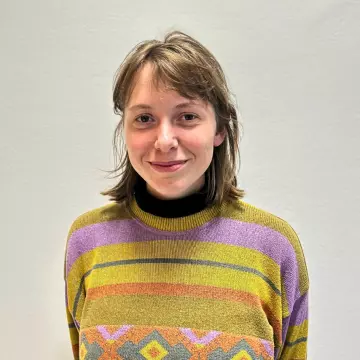#Tips
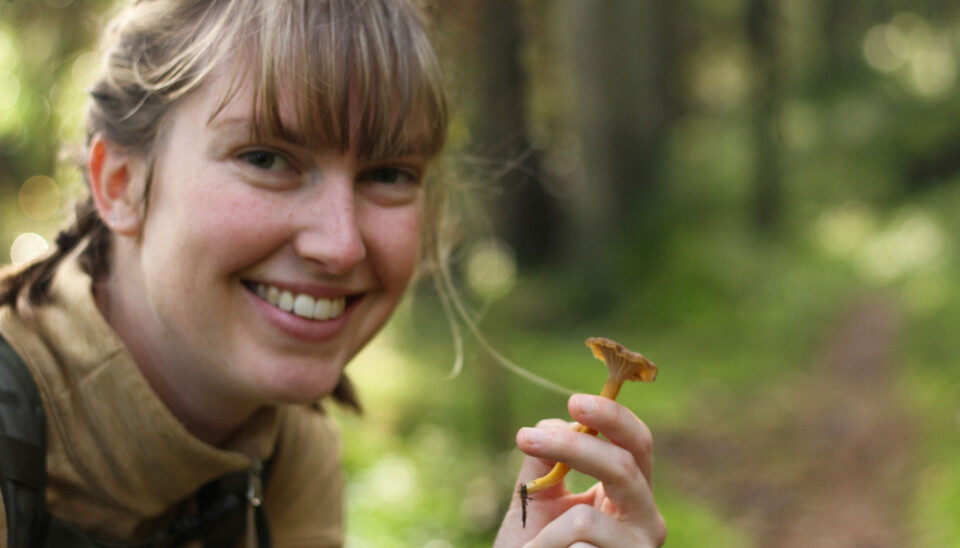
Picking Mushrooms Like a Pro
Release your inner forager and hunt for some delicious mushrooms (without getting food poisoning)
My flatmate and I went foraging with the help from an experienced mushroom-picker. We followed her steps and found a lot of chanterelles, which we transformed into a flavorful creamy pasta sauce. Mushroom picking is easy and fun when done carefully. So release your inner forager and pick some tasty mushrooms with us!
How surprised I was to see that picking mushrooms was such a normal thing here in Oslo. Especially on Sundays Norwegians go for a walk in the forest to collect mushrooms and identify them afterwards at the Mushroom Identification Stall at Sognsvann. Coming from the Netherlands, I always saw fungi as poisonous and something to stay far away from. In Oslo I learned that this mycophobia is almost non-existent in Scandinavia and Eastern Europe. Fascinated as I was, I asked a Norwegian student with an Eastern European background about her knowledge of mushrooms and went mushroom picking with Lotte, my fellow Dutch flatmate. I collected the most important information for all the curious international students who want to try foraging.
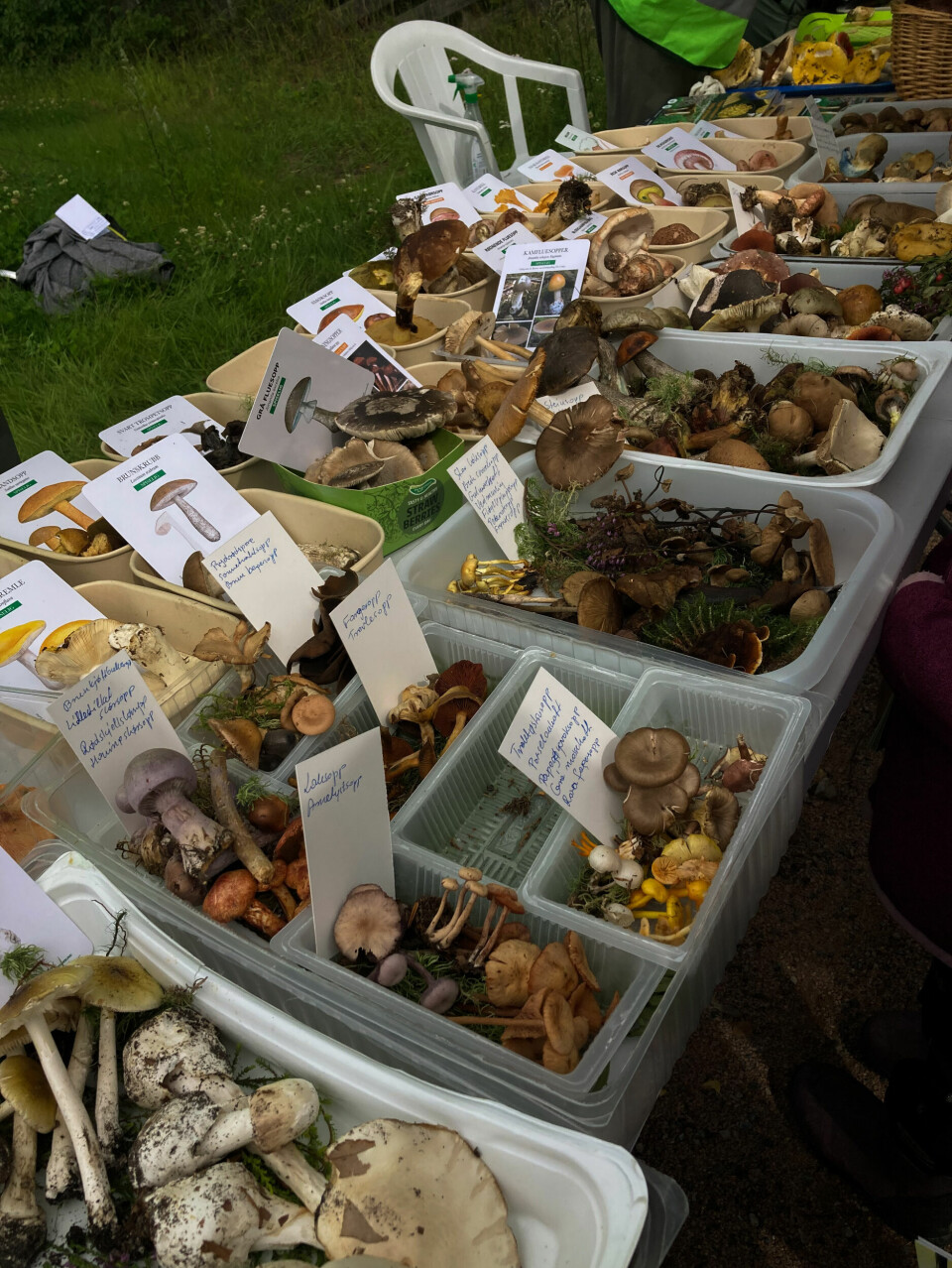
Prepare
“Prepare for a long day of hiking. The further you go into the forest, the higher the chance you find some edible mushrooms,” our source told us. “Bring water, lunch, and some linen bags as mushrooms need to be able to breathe. And don’t forget a knife, so you can cut the mushrooms in half to prevent taking the ones with insects inside.” She also added that the weekly mushroom stall at Sognsvann hands out handy field guides for beginners. “Perfect to take with you on your hunt!”
Lotte and I made ourselves some sandwiches, packed all the other things we needed, put on our hiking boots and started our hunt in the forest next to Sognsvann. The forest paths were muddy, and we had to hold each other many times to not slip away. Bringing a friend is not only nice for companionship, it can also prevent you from falling!
Pick
Picking mushrooms is a family tradition for our guide. “I’m not an expert, but I do have a lot of experience”, she told us. “And I know that the number of different mushrooms can be overwhelming for beginners.” Therefore, it’s important to identify every mushroom by looking closely at the color of their cap and the spore-producing structure underneath. The color of the stem will also help you to distinguish mushrooms.
There are four dangerous species in Norway, and they all have gills as the spore-producing structure. Because of this, it’s safer to leave them when you go foraging. Ideally, you start searching for boletes and chanterelles. They are easy to recognize, and you have probably seen them before in supermarkets.
Lotte and I found many yellow and brown chanterelles on our stroll. They grow nearby trees and are easy to spot because of their noticeable color and shape.
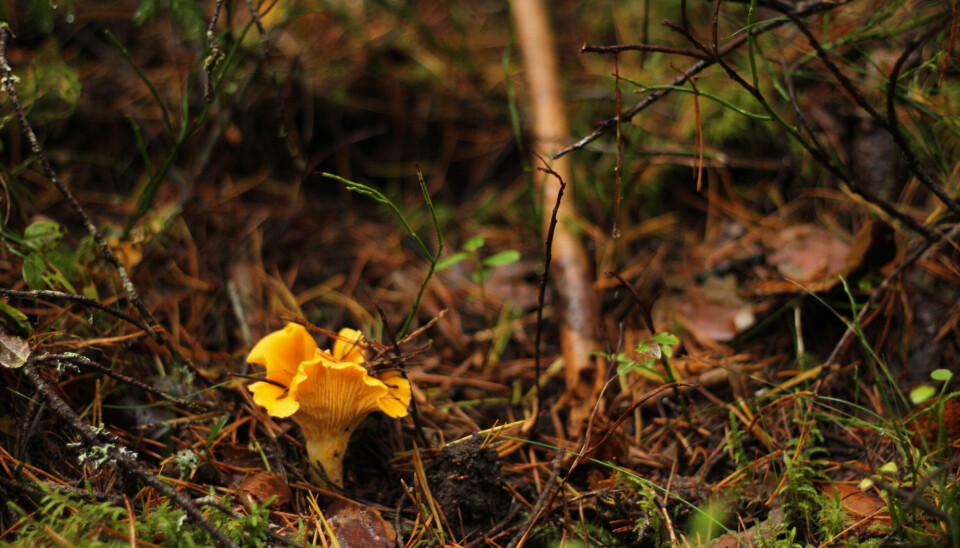
As you can see, chanterelles have folds instead of gills under their cap. The stem is white-ish, which is not very distinguishable in this picture, and when you cut them in half, the inside should be white as well. They smell a bit like apricots and when you find one, there are normally a lot more in the neighborhood. Lotte pointed this one out and we did a little celebration dance around our first found mushroom!
Nearby, we saw many more of these golden fungi. Some were really big and looked old, so we didn’t pick them. The season for these kinds of chanterelles is almost over, so the chances of finding some young and fresh ones are getting lower. Older ones usually have been eaten by insects already and don’t taste as good as younger ones.
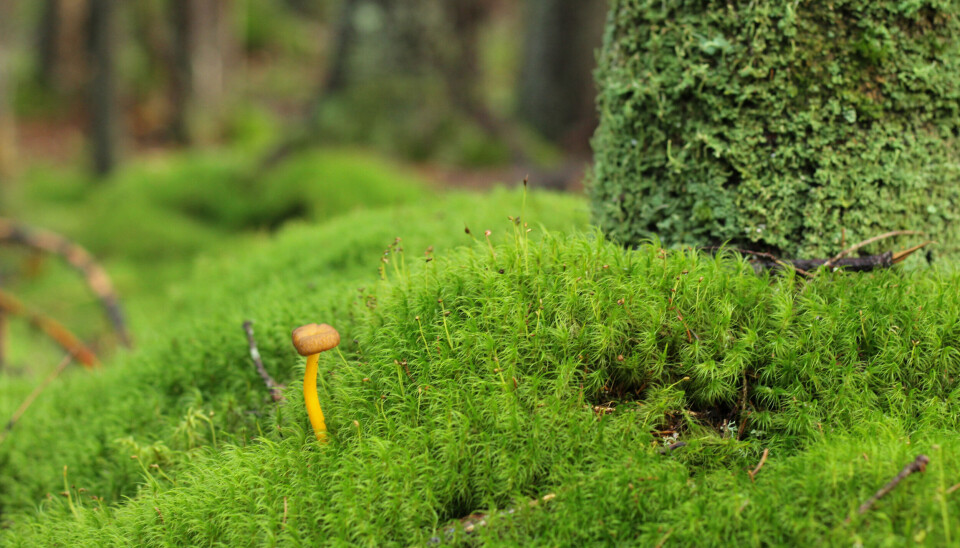
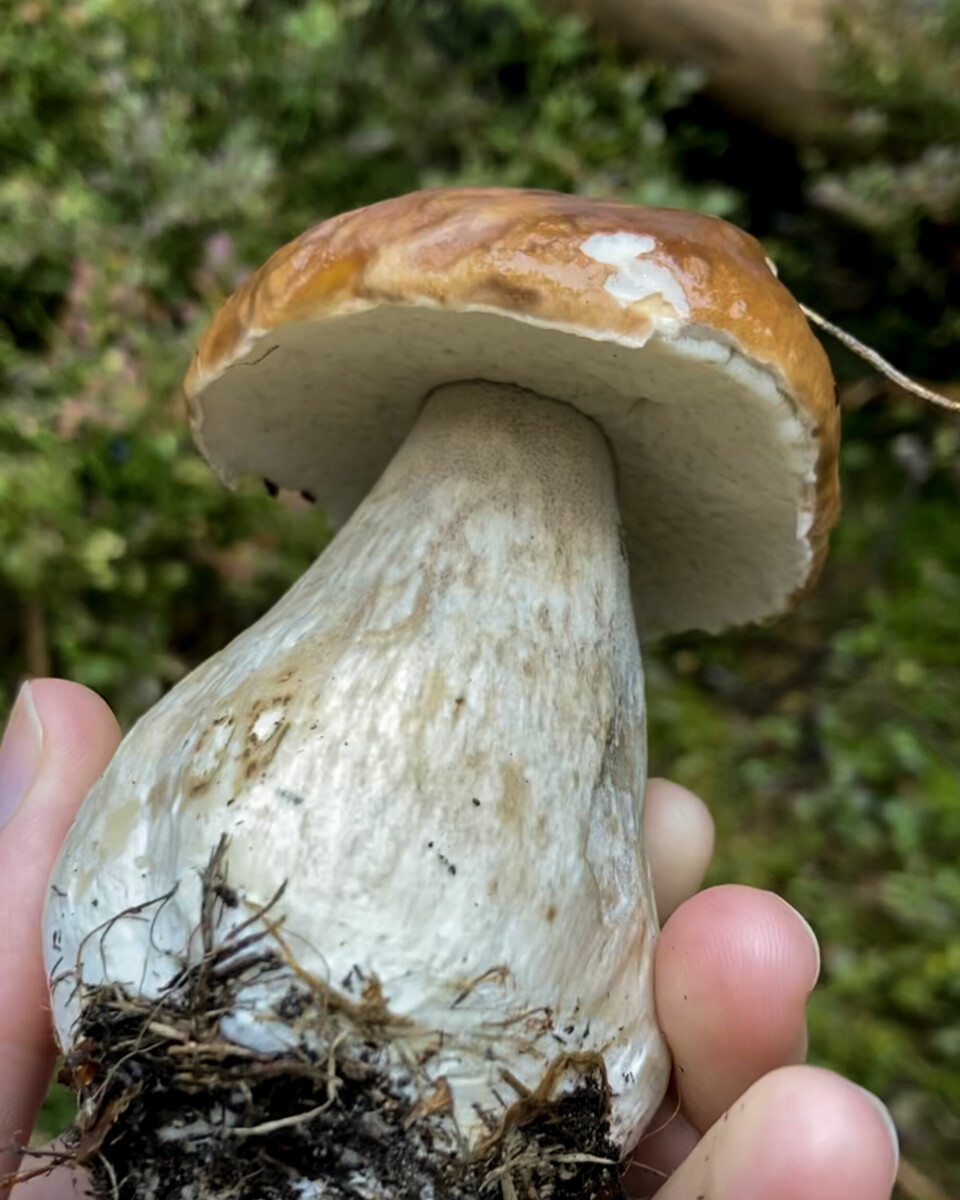
In the picture above you can see a traktkantarell, also known as yellowfoot. They have a yellow stem and a hollow funnel shape. They appear in clusters and you can find them until late fall, so the chances of finding them this time of the year are pretty high. With these mushrooms, it’s also important that you only pick the ones that you would also buy in a market. Leave the old and gross looking ones!
Lotte and I found a lot of these cute brown chanterelles, although they were a bit harder to spot, surrounded by all the fallen autumn leaves. We were so focused looking for them, it felt like meditating. Later that day, when I was about to fall asleep, I could still see the image of the mossy forest ground right in front of me.
Boletes are also easy to recognize and don’t have poisonous look-alikes. Underneath their brown cap, you can find a spongy spore-producing structure, also called pores. These mushrooms are incredibly tasty, and while this one can be eaten raw, some boletes need to be cooked 15 to 20 minutes before eating. They normally don’t grow in groups, but once you find one, there will be more boletes close by.
Enjoy
My flatmate and I found many yellow and brown chanterelles. We cleaned them with mushroom brushes, cooked them for about 10-15 minutes and prepared them in a creamy pasta sauce to share with our friends. Hiking in the autumn forest, the joy of finding edible mushrooms and eating them with friends is a lot of fun. I can highly recommend everyone to try this Norwegian experience. So pack your lunch, grab a friend by the hand and go on a mushroom adventure!
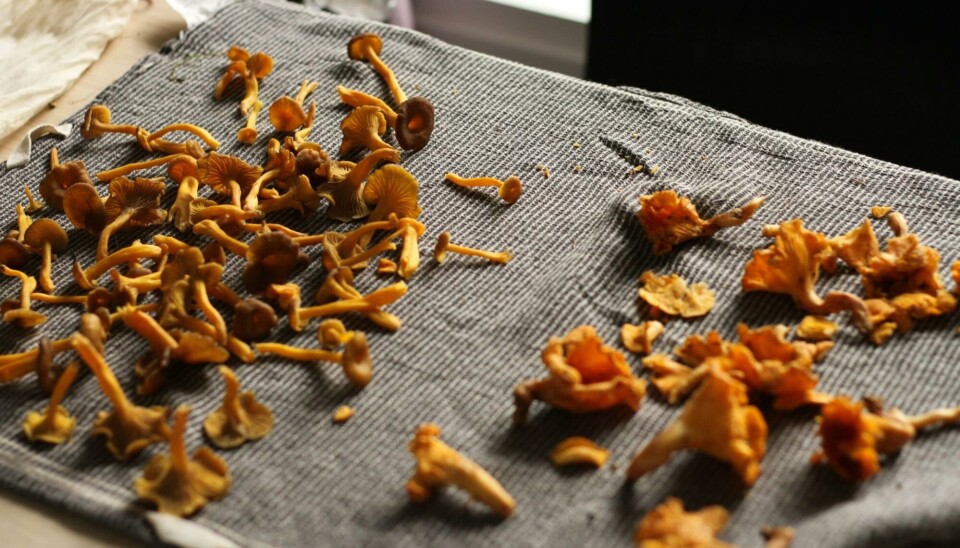
Do’s and Don’ts of Mushroom Picking
Do leave the little mushroom babies to grow a bit more, so the next foragers can enjoy them. When you found plenty already, leave some for the next mushroom pickers.
Do separate the mushrooms you are not 100% sure of and the ones that need a bit more inspection and identification in different bags and boxes.
Do take many pictures and identify the mushrooms on the website of the Norwegian Mushroom Control or a mushroom identifying Facebook group, like this one or this one.
Don’t touch and pick mushrooms you don’t know. It’s better to take a picture, let experts identify them and come back later than to pick all the mushrooms you find only to find out they are dangerous and you have to throw them away. Think about the environment!
Don’t pick old mushrooms. They probably have a lot of insects in them and might not be as tasty as the younger fresh ones.
Don’t pick mushrooms growing next to a car road. They are very sensitive to pollution and absorb bad substances easily.
Last but not least, when you have been mushroom picking before in a non-Northern European country, always check your mushrooms. There have been several accidents from people who picked poisonous mushrooms that looked like Asian edible mushrooms, like the one written about in this Norwegian article.
